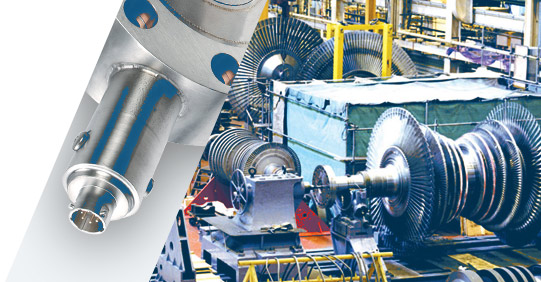In pursuit of weight savings, aerospace companies are moving towards more exotic materials. While stronger and lighter, these materials are also challenging to machines. They may chip, fracture, or burn if handled and machined incorrectly. As many are composite structures, it’s possible for damage to occur internally where it can only be detected with expensive inspection techniques.
Carbon fiber is a good example. Usually combined into a composite with a very high strength-to-weight ratio, it is exceptionally rigid and strong—but also brittle. Holding it in place for secondary machining operations requires very careful control over clamping forces to avoid damaging or even crushing the parts.
Carbon fiber is a good example. Usually combined into a composite with a very high strength-to-weight ratio, it is exceptionally rigid and strong—but also brittle. Holding it in place for secondary machining operations requires very careful control over clamping forces to avoid damaging or even crushing the parts.
Problem
A builder of precision aerospace manufacturing equipment was designing special-purpose CNC machines for drilling holes in long, thin carbon-fiber-composite components. The nature of the part meant it needed clamping at each end, to be achieved by servomotors. However, as some part length variation was inevitable, moving the clamps to fixed positions risked damaging or dropping the workpiece. To avoid this, the machine designers wanted to maneuver them in to achieve a predetermined load.
To minimize automation cycle time, these motors would move the clamps in rapidly before slowing to 1/10th of an inch per second. Servomotors are capable of providing 200-300 pounds of force, so the machine needed to sense the onset of clamping and stop the servomotors before forces became too high.
To minimize automation cycle time, these motors would move the clamps in rapidly before slowing to 1/10th of an inch per second. Servomotors are capable of providing 200-300 pounds of force, so the machine needed to sense the onset of clamping and stop the servomotors before forces became too high.
Solution
This problem posed three challenges for OMEGA. First was the need to incorporate a compression load cell into the servo-clamping system of the automated machine. Second, as the machine controller would be remote from the load cell, the millivolt output signals needed amplification and conditioning to avoid any degradation affecting accuracy. And third, all this had to happen fast enough to meet the speed and cycle time requirements of the automation controller.
To measure the clamping force, OMEGA proposed using LC201 series subminiature load cells. Just 19 mm (0.75") in diameter and 6.4 mm (1/4") thick, these cells measure both compressive and tensile forces up to 500 N (metric models) or 300 pounds. A four-conductor shielded cable handles both excitation voltage and millivolt output signals. For easy installation, the load cells come with dual mounting studs and stainless steel construction to protect against damage.
Getting the load cell output signals to the machine controller required a signal conditioner. However, conventional DIN-mounted signal conditioners lacked the speed needed for precise motion control. That led OMEGA to recommend the new IN-UVI high speed signal conditioner. With a response time of 200 μS, this conditioner would ensure that the controller stopped the clamping motion before damaging the workpiece.
The IN-UVI is an in-line Wheatstone bridge signal conditioner packaged in a compact IP65 stainless steel enclosure. Ideal when space is limited, it improves the signal-to-noise ratio, allowing millivolt signals from the load cell to be sent over longer distances. A supply voltage of 22 to 32 Vdc provides the load cell with one of two user-selectable excitation voltages and amplifies the millivolt output signal to suit the controller requirements.
To measure the clamping force, OMEGA proposed using LC201 series subminiature load cells. Just 19 mm (0.75") in diameter and 6.4 mm (1/4") thick, these cells measure both compressive and tensile forces up to 500 N (metric models) or 300 pounds. A four-conductor shielded cable handles both excitation voltage and millivolt output signals. For easy installation, the load cells come with dual mounting studs and stainless steel construction to protect against damage.
Getting the load cell output signals to the machine controller required a signal conditioner. However, conventional DIN-mounted signal conditioners lacked the speed needed for precise motion control. That led OMEGA to recommend the new IN-UVI high speed signal conditioner. With a response time of 200 μS, this conditioner would ensure that the controller stopped the clamping motion before damaging the workpiece.
The IN-UVI is an in-line Wheatstone bridge signal conditioner packaged in a compact IP65 stainless steel enclosure. Ideal when space is limited, it improves the signal-to-noise ratio, allowing millivolt signals from the load cell to be sent over longer distances. A supply voltage of 22 to 32 Vdc provides the load cell with one of two user-selectable excitation voltages and amplifies the millivolt output signal to suit the controller requirements.
Results
OMEGA’s load cell and signal conditioning solution fully met the needs of the customer. More than 20 machines have now been outfitted with this clamping force control system. Each system uses two LC201-300-pound load cells (for redundancy) and two IN-UVI signal conditioners. Operating at high speed, they deliver the signals needed for precise clamping force control. This has resulted in faster response, higher reliability, and most important of all—reduced workpiece damage.







